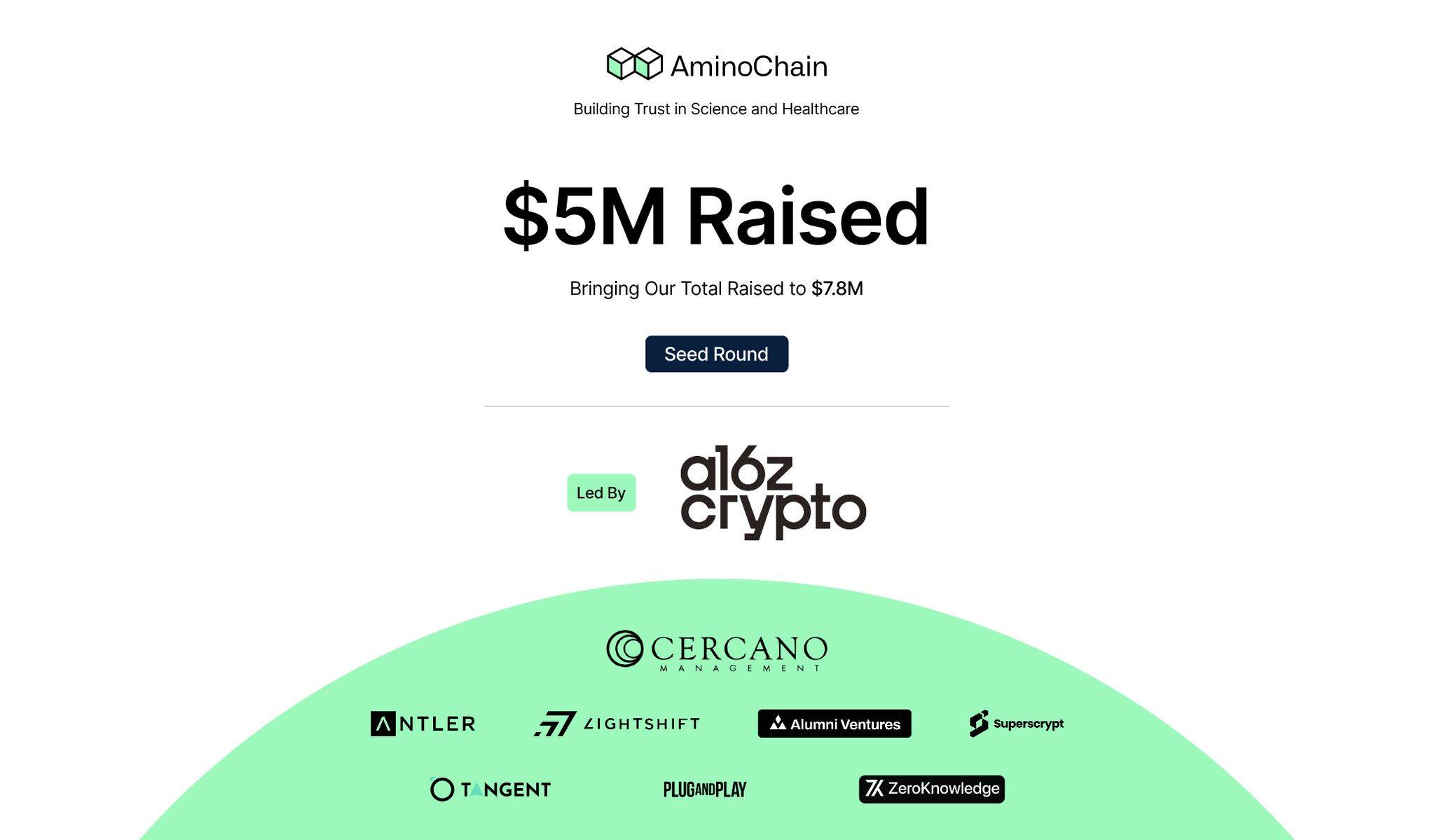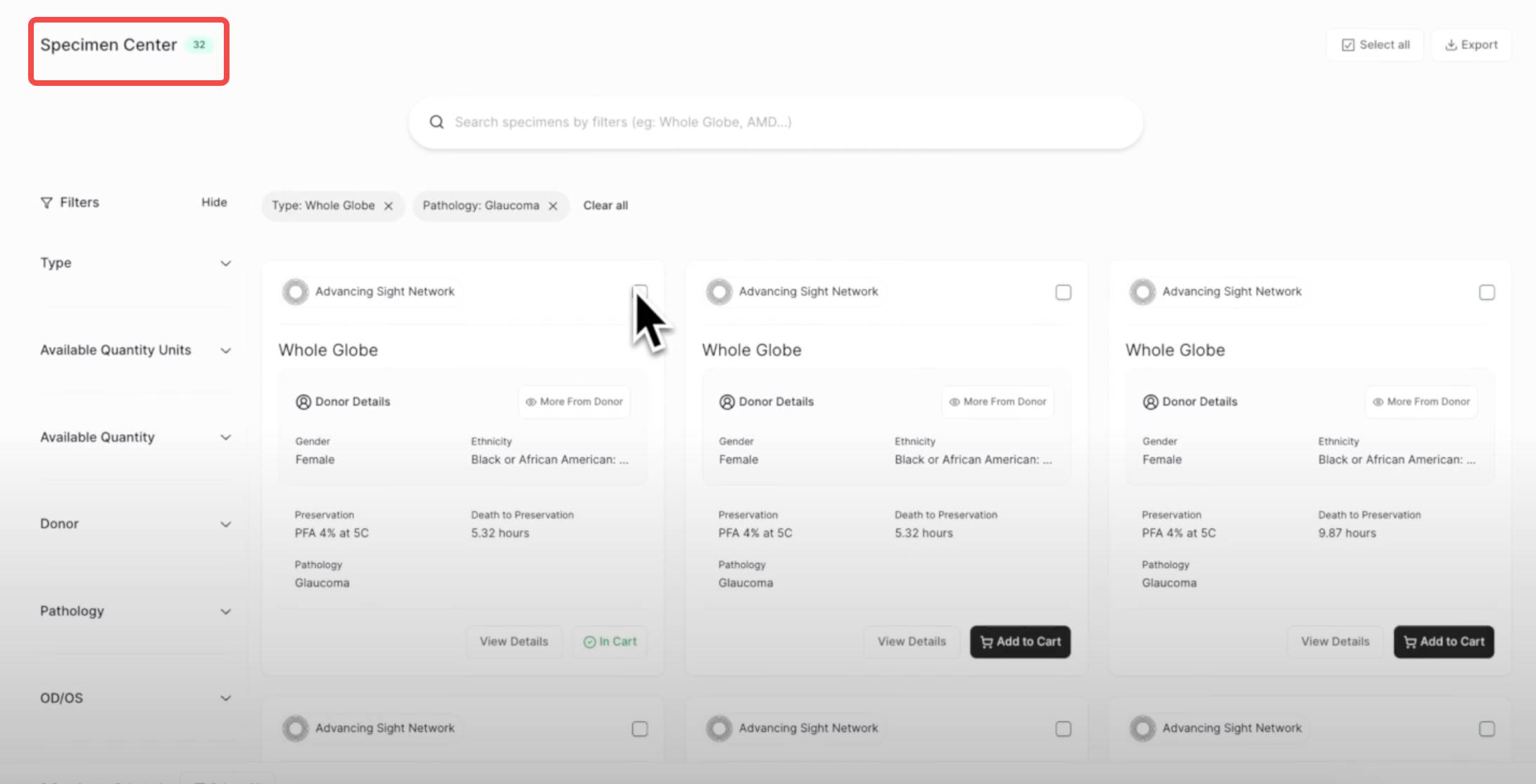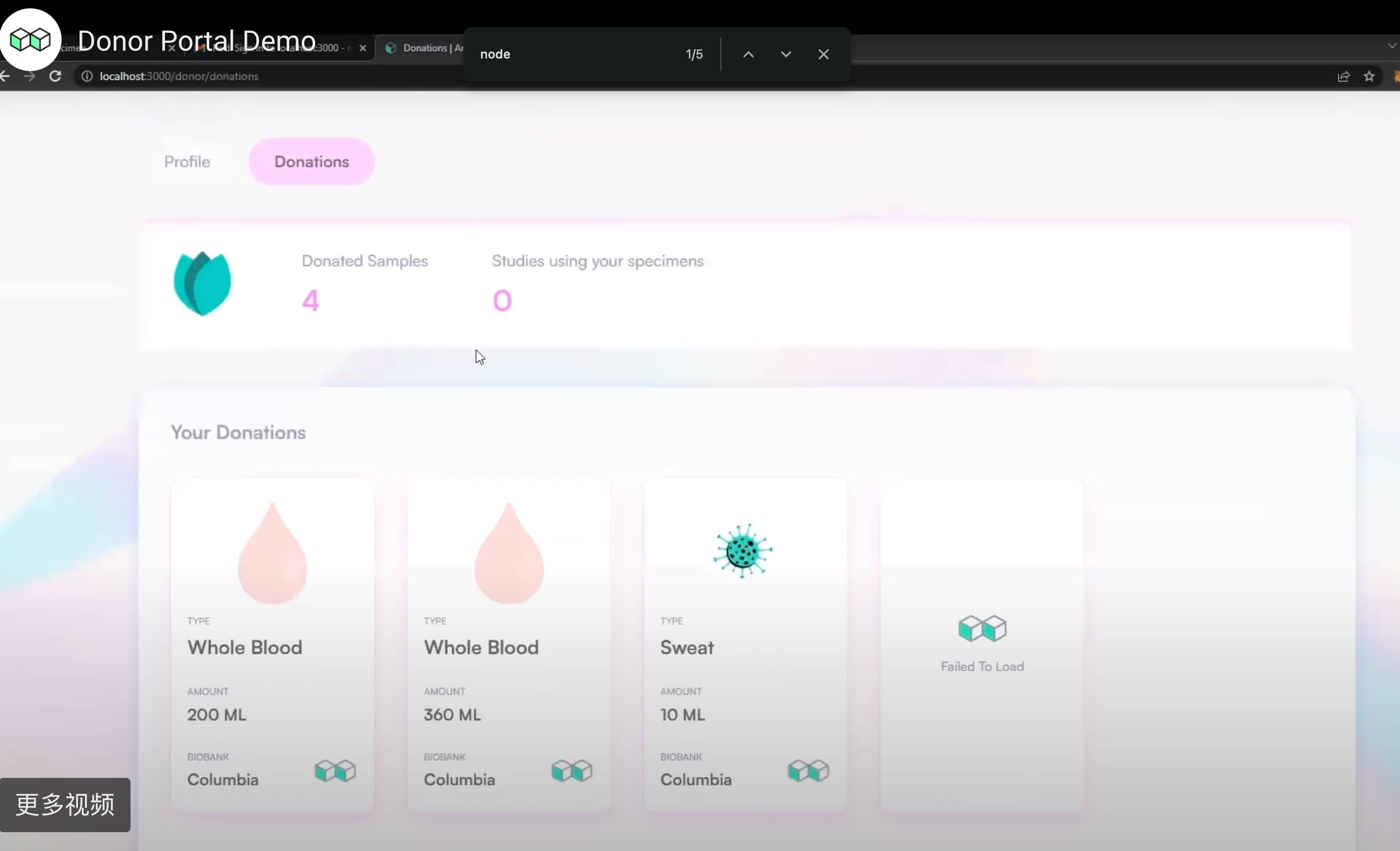AminoChain belongs to the pure DeSci track, using the traceability and transparency of blockchain for the collection, contribution, use, and rewards of biological specimens in the medical and scientific research fields.
Author: Shenzhen TechFlow
The crypto market is not just about memes. The exploration of applying economic incentives and data control to practical use has never stopped.
Among them, DeSci (Decentralized Science) has always been a focus—using the transparency and incentives of blockchain to allow data owners to contribute data, track data usage, and receive due rewards.
Recently, a new project called AminoChain announced on its official Twitter that it has received a $5 million seed round investment led by a16z, in addition to investments from other private funds such as Cercano, bringing the total funding for the project to $7.8 million.

AminoChain belongs to the pure DeSci track, using the traceability and transparency of blockchain for the collection, contribution, use, and rewards of biological specimens in the medical and scientific research fields.
It is worth mentioning that a public announcement shows that this is also the first time that top VC a16z has invested in a project in the DeSci track.
In the fast-paced market where VCs do not back each other and memes are flying everywhere, if crypto can do some good for traditional industries, and if VCs can truly invest in projects that are beneficial to other industries, it would be a correct and unique trend.
Building a dedicated biobank on L2
Public announcements show that AminoChain is building a decentralized "biobank" on L2.
The so-called biobank can be understood as an on-chain platform that connects patients and volunteers, allowing them to upload their biological samples for use and research by medical and scientific research institutions. It also connects medical institutions, enabling them to securely share and process medical data in the biobank network.
With the design features of the public chain, researchers can easily find and access samples, while patients retain control and receive compensation for the use of their data.
However, it is currently unclear whether AminoChain is building its own decentralized biobank on an existing L2 or creating a separate L2 specifically for handling "transactions" related to medical data and biological specimens.
Based on the project name, the latter possibility seems more likely.
Setting aside the specific technical choices, what is the motivation for establishing a decentralized biobank?
As the founder of AminoChain stated in a blog post:
"Every year, thousands of people provide their blood, saliva, and cancer tissue samples to the medical community to help researchers develop life-saving new drugs and benefit humanity… Unfortunately, the data collected from these highly sensitive personal samples is one-way."
Biological sample donors are asked if their samples can be used for scientific research, they sign a consent form, researchers collect the biological samples, and then the two parties go their separate ways with no further involvement. The process of donating samples is a black box for donors, and the consent rate at major institutions is as low as 25%.
Therefore, in the field of biological sample contribution, which we do not know much about, there are at least two issues:
Centralized control and storage of sample data pose a significant obstacle to scientific progress and improving patient outcomes.
Inability to effectively track the source of samples and manage user consent.
To put it more bluntly, patients or volunteers who contribute their biological samples may not receive due compensation, and may not even know the extent of their contribution.
Therefore, AminoChain is a technology that connects enterprise medical institutions, enabling the construction of healthcare applications and providing transparency to patients, allowing them to ultimately understand where the funds they donate to society are going.
Installing a node in traditional institutional databases
How does AminoChain work specifically?
The key lies in AminoNode, a software package developed by the project.
Traditional medical or scientific research institutions are certainly not as familiar with encryption and blockchain, and their information systems are highly customized and closed.
Therefore, Amino's approach is to install its own software package, AminoNode, in the existing systems of traditional institutions without making any changes. From the name, AminoNode certainly looks more like a node in the Amimo network, but in terms of functionality, it differs from the nodes that verify the correctness of transactions as we understand them:
It is more like a data collector implanted in traditional systems, standardizing and processing the data.
AminoNode can be integrated into a hospital's or scientific research institution's own EMR, inventory management software, and data collection software. The data is stored on specific institution servers, while the node software standardizes the data into a common format, enabling interoperability with partner networks.
As a result, the node software can obtain data from all providers and bring trusted neutrality to the network. Based on this, developers can obtain data from numerous medical institutions and build patient-centered applications.
Currently, the first application developed by AminoChain itself is called "Sample Center," a peer-to-peer biological sample market.

In this market, researchers and collaborators are allowed to query their biological sample collections and also search for research assets available for their use. Between institutions, users can simplify licensing agreements, track the use of samples and data, and maintain the complete origin of biological samples in an interoperable biobank network.
Due to the transparency and traceability of the market, the efficiency of biological sample use and communication has clearly improved. In traditional situations, researchers typically need to exchange emails for an average of 8 weeks to find the required samples, sign licensing agreements, and transport the samples, but now it may be as simple as a click.
At the same time, patients/sample donors can track the whereabouts of their samples in the network, learn from the information generated by the samples, and earn money when the samples are commercialized or sold.
For example, in the demo below, data such as blood and sweat contributed by the patient at different times can be seen in a management dashboard, and the usage and flow of samples can also be traced on the blockchain (L2).

More than just biological samples
The use case of this sample market actually demonstrates the control that patients have over their contributed data and the benefits they can derive from it. However, it is clear that there are more use cases than just this one.
Medical institutions in the AminoChain network will be able to benefit from multiple distributed applications such as clinical recruitment, clinical trial management, decentralized artificial intelligence, and federated learning.
Ultimately, the project's vision is to create the world's first blockchain that complies with HIPAA and GDPR standards for the healthcare industry—any company, network, non-profit organization, or independent scientist can access and build compliant healthcare data on this platform.
Due to the sensitivity and privacy of medical data, the on-chain storage and tagging of data inevitably also incorporate privacy protection technologies such as zero-knowledge proofs, enabling the granting of different usage rights to the data under declared data control and obtaining profits based on usage rules.
In a strict sense, this narrative of DeSci also aligns with the spirit of the crypto community and degens, that is, maximizing individual rights—patients are no longer the weakest link in the entire chain of interests, allowing patients to benefit first from participating in scientific research.
At the same time, we have recently seen more projects emerging related to RWA, clean energy, DeSci, and others.
As the trend of integration with more traditional industries continues, the definition of crypto as a gambling den may gradually change.
免责声明:本文章仅代表作者个人观点,不代表本平台的立场和观点。本文章仅供信息分享,不构成对任何人的任何投资建议。用户与作者之间的任何争议,与本平台无关。如网页中刊载的文章或图片涉及侵权,请提供相关的权利证明和身份证明发送邮件到support@aicoin.com,本平台相关工作人员将会进行核查。




